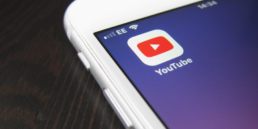Advertising and marketing companies, and some of the big brands, have really started to wake up to the problem of influencers with fake followers, and with one in eight Instagram influencers in the UK buying fake followers in the last six months, who can blame them. After all, if you’re working on an influencer marketing campaign but not getting your product seen by actual consumers, whats the point?
How do you tell if the influencer you’re looking to work with has a genuine following? Follow our tips on how to tell if an influencer has fake followers and find out.
A lot of followers, but low engagement
We’ve said it before and we’ll probably say it again, engagement rate is a better indication of an influencer’s credibility than the number of followers they have. It is increasingly easy, and cheap, for an individual to purchase fake followers to inflate their influence and secure brand deals off the back of that fake audience.
To work out an influencer’s engagement rate, simply take the average number of engagements an influencer gets on a post and divide it by the number of followers they have. If an influencer has an engagement rate of 1% or less, then it’s likely they will have some fake followers. 5% engagement rate is considered fairly average, whilst an engagement rate of 8%+ is considered strong and the level we would recommend working with.
Looking at an Instagram influencer? You can use Phlanx’s tool to check their engagement rate in a jiffy.
They're followers are a bit shady
Take a look through their followers. Do lots of them have no profile picture? No images at all? Do they follow a lot of accounts, but have very few followers themselves? What about their location? Does that seem at odds with the influencer’s location? For example, if you’re looking to work with a London based food blogger, but most of their follower base appears to live in Asia, is this the audience you’re hoping to reach? Probably not.
It’s a good idea to ask any influencers you’re looking to work with to send screenshots of their audience analytics so you can see for yourself who their followers are. You can also use platforms like deep.social to dig deeper into audience analysis.
A lot of the comments they receive are generic
Like fake followers, fake engagement can also be purchased, but, certainly in the form of comments, it’s relatively easy to spot. Think generic comments like ‘cool’, ‘love it’, ‘awesome pic’ or ‘great page’, these will have been made by bot accounts. Genuine followers that take the time to comment are likely to put more thought into what they say. If a lot of their comments are generic, this should be a red flag.
They've had a sharp spike in followers
Websites like SocialBlade provide audience numbers for influencers over time and, generally, you should see a nice, steady climbing graph. A sharp spike in followers doesn’t necessarily mean an influencer has purchased followers, but if you’re already suspicious and SocialBlade shows a dramatic increase over a short period of time, be wary.
They don't have very many posts
Typically it takes influencers a while to build up their following. It’s likely they’ll have been posting for a number of years and pretty consistently. If the influencer you’re looking to work with appears to have hundreds of thousands of followers, and only 50 or so posts, that looks pretty suspicious.
If you're still unsure, hire the pros
You should put in the time and effort to learn about the influencer you’re looking to work with and, more importantly, the behaviour of their audience. We suggest following the influencer for at least a week before reaching out to them to get an idea of how they work and how they engage with their audience.
If this all sounds a bit overwhelming or you’re unsure where to start, get in touch anytime – we’d love to help you get started with a (genuine) influencer marketing campaign.
About Viral Seeding
Viral Seeding is a specialist content seeding and influencer marketing agency.
We offer a personal service, taking the time to understand your campaign requirements to execute a strategy that ensures that we deliver views, engagement, endorsement and sharing via social media. Want to find out more? Get in touch.
Leanne Coombes
Leanne has been an Account Manager at Viral Seeding for over two and a half years, bringing with her several years' experience in public relations and communications. Prior to Viral Seeding she worked at a Publishing & Arts PR agency and has experience in-house at several UK publishers. Away from work, she teaches yoga and is a keen reader.
Related Posts
15th May 2019
4 Ways Viral Seeding Can Support Your Client’s Campaign
How Viral Seeding works with PR and…
11th September 2019
Top 5 Reasons to Promote Videos on Facebook
Why you should promote your videos on…





